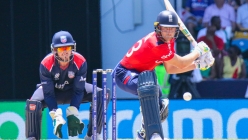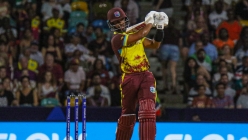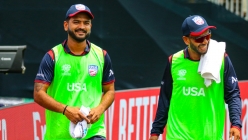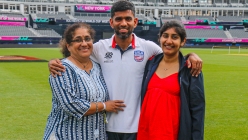Views
Image is not everything: A Suresh Menon column
2009 Jan 19 by Suresh Menon
In his recent book, Aakash Chopra says with remarkable honesty, "For players like me there aren't too many comebacks." You can score over a thousand runs in a season, be part of a team that wins the national championship, claim more wickets than most or be the hero of the zonal championships, yet once dropped from the national team that's it.In his recent book, Aakash Chopra says with remarkable honesty, "For players like me there aren't too many comebacks." You can score over a thousand runs in a season, be part of a team that wins the national championship, claim more wickets than most or be the hero of the zonal championships, yet once dropped from the national team thatâ??s it.
Scott Fitzgerald famously said that there are no second acts in American lives. Likewise with some players, and for no fault of theirs. Perhaps it has to do with public perception. In Chopra's case, the perception is that he is a dour, defensive opener. This image, picked up during the Australian tour five years ago, was the result of team strategy, when he was required to occupy the crease and blunt the fast bowling attack so India's famed middle order could then open out. And it worked superbly for India. Not so superbly for Chopra, though.
A generation earlier, it was the Tamil Nadu opener Sadagopan Ramesh. Praised by Wasim Akram for his courage and strokeplay, Ramesh was on the verge of establishing himself when he was suddenly found to be surplus to requirement. "Footwork", "footwork", the commentators kept saying, and it was a shortcoming Ramesh could not live down although it didn't seem to affect his batting too much. A bit like Virender Sehwag who had to make two triple centuries before the authorities decided that footwork may be overrated.
Laxmipathy Balaji, the fast bowler who charmed a dictator in Pakistan was on the verge of a comeback for the one-day series in Sri Lanka, but will now have to go through the agonies of another domestic season before his name crops up again in the list of probables. Injury sidelined him, as it has Kerala's Sreeshanth. Their replacements have done well, and, as Mohinder Amarnath, the king of comebacks found out, it is more difficult to return to the team after being dropped than to get into it in the first place. His brother Surinder once made a double century in a Duleep match which was a Test trial for an Australian tour but didn't return to the squad because of an image problem. His image was that of an attractive player who was too easily satisfied.
Image and injury ensure that there is a high turnover of players in the national team. Sometimes, of course, image works in favour of the player too. Rahul Dravid, now re-established in the team, was luckier than most simply because he was Dravid, and his image was that of a player for whom failure was a stranger.
A predecessor as captain of Karnataka and India, Gundappa Vishwanath, had an image problem too. He was the most creative Indian batsman of his era, a wonderful improviser of shots, but it was decided that he was not a one-day player. His brother-in-law Sunil Gavaskar who never hid his contempt for the one-day game was a regular, but Vishwanath himself was in and out, mainly out.
In the current team, Yuvraj has laboured for long under the weight of his image as a casual player, unable or unwilling to buckle down to serious business. A place in the Test team seldom falls into the lap of a player, and most of those who have got that far are conscious of this. Yet some players pick up such a reputation, and few are able to shake it off.
PR managers are fond of saying that an ounce of image is worth a pound of performance. Fine, but not when it works against the player.




